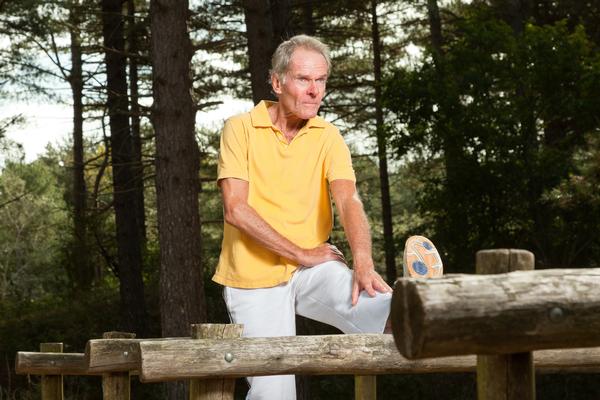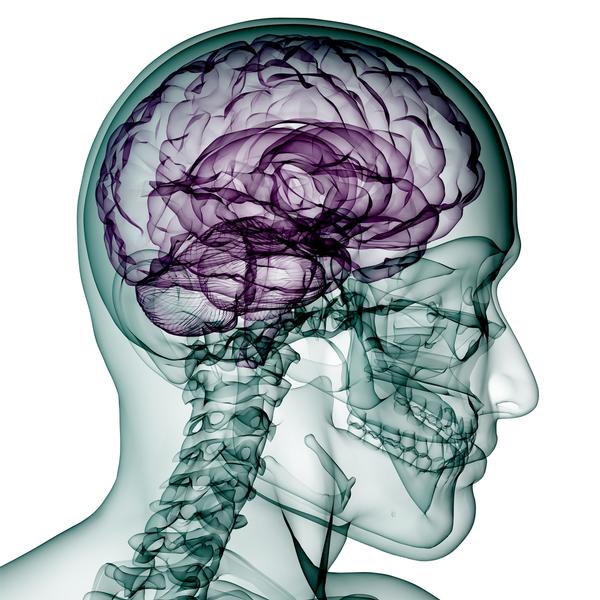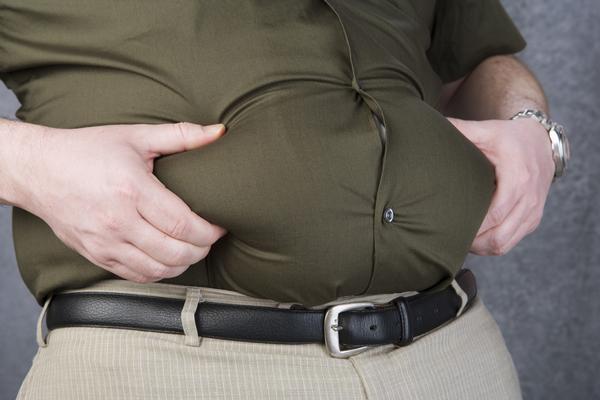
|
 |
Health Club Management Handbook - Science snapshot

Research Round-up

|
|
| Science snapshot
|

The heart repairing, cancer preventing, brain calming benefits of exercise: we round up some of the latest research in the area of health, fitness and wellbeing
|
|
|

|
Mending a broken heart

Regular and strenuous exercise can reactivate dormant stem cells, leading to the development of new heart muscle – indicating that the damage caused by heart disease or failure could be partially repaired by exercise.
Researchers from Liverpool John Moores University in the UK showed that healthy rats undertaking the equivalent of 30 minutes’ strenuous exercise a day demonstrated activity in 60 per cent of previously dormant heart stem cells. After two weeks of exercise, there was a 7 per cent increase in the number of cardiomyocites – the ‘beating’ cells in heart tissue.
While an exercise programme is normally included in cardiac rehab, “maybe to be more effective it needs to be carried out at a higher intensity, to activate the resident stem cells,” says Dr Georgina Ellison, who led the study.
• Waring, CD et al. European Heart Journal (2012)
| |


|
| ALL PICS: ©www.shutterstock.com |

Exercise may help repair the damage caused by heart disease |
|

|
Boosting male fertility

In research by Harvard University, men who undertook 15 or more hours of moderate to vigorous exercise each week had, on average, sperm counts that were 73 per cent higher than those who exercised for less than five hours a week. Mild exercise had no effect.
Sedentary activity, measured by the number of hours spent watching TV, had a negative effect on sperm count: those who watched 20 or more hours of TV each week had a 44 per cent lower sperm count than those who watched very little TV.
However, researchers warn that too much exercise can be harmful to sperm production. Previous studies involving professional marathon runners, elite cyclists and triathletes have reported poor semen quality among these groups, caused by the stress to the body brought on by prolonged periods of intense exercise.
• Gaskins, AJ et al. British Journal of Sports Medicine (2013)
| |


|
| ALL PICS: ©www.shutterstock.com |

Boosting male fertility |
|

|
Brain protection

A diet containing lots of fatty foods is associated with a decline in brain functioning, elevating the risk of conditions such as Alzheimer’s. Exactly how this occurs is unknown, but researchers think fatty acids from food infiltrate the brain and jump-start a process that causes damage to the regions responsible for memory and learning.
A study by the University of Minnesota in the US examined the result of a high-fat diet (where at least 40 per cent of calories were from fat) on memory in rats, and the subsequent effects of exercise. Memory declined after four months of the high-fat diet, but then improved once exercise – the equivalent of 30 minutes’ jogging a day – was introduced.
After seven weeks, the rats on the high-fat diet were scoring as well on the memory test as they had at the start, whereas the memory of those not exercising continued to decline. However, it’s not known if the same protective effect would be noted in humans.
• Mavanji, V et al. Presented at the annual meeting of the Society for Neuroscience (2012)
| |


|
| ALL PICS: ©www.shutterstock.com |

Might exercise protect the human brain from a fatty diet? |
|

|
Warding off breast cancer

The effect exercise has on how women produce estrogen could be a reason why physical activity helps to reduce the risk of breast cancer, US scientists have found.
Just under 400 healthy but sedentary females aged 18–30 years were randomly split into two groups. All were premenopausal, meaning their bodies still produced estrogen – a large contributing factor in developing breast cancer. The first group remained inactive for the 16-week trial; the second performed 30 minutes of moderate to vigorous aerobic activity five times a week.
Exercise had a significant impact on two estrogen metabolites – by-products when estrogen is broken down by the body. Women in the exercise group had higher levels of the relatively benign metabolite hydroxyestrone and lower levels of 16 alpha-hydroxyestrone, a mutagenic metabolite that’s capable of damaging DNA and that’s considered potentially carcinogenic. Having more of the benign metabolite and less of the damaging one is, say the researchers, linked to warding off breast cancer.
• Kurzer, Mindy S et al. Cancer Epidemiology, Biomarkers & Prevention (2013)
| |


|
| ALL PICS: ©www.shutterstock.com |

Exercise could lower breast cancer risk by impacting estrogen production |
|

|
A calming influence

Scientists at the University of Princeton, US, have discovered that exercise has an impact on neurons in the brain, ‘rewiring’ it to make it more resilient to stress.
In the study, one group of mice was given unlimited access to a running wheel; another group was not and remained sedentary and caged. As natural runners, mice will cover up to 2.5 miles daily on a wheel. After six weeks, all mice were briefly exposed to cold water, with brain activity analysed.
In the neurons of the sedentary mice, the shock spurred an increase in ‘immediate early genes’ – short-lived genes that are rapidly turned on when a neuron fires. The active mice did not have these genes in their neurons, suggesting their brain cells did not immediately leap into an excited state in response to the cold water.
In the active mice, there was also a boost of activity in inhibitory neurons that keep excitable neurons in check. In addition, their brain neurons released more of the neurotransmitter gamma-aminobutyric acid (GABA), which dampens neural excitement. And there were higher levels of a protein that helps deliver and release GABA into the brain.
• Gould, E et al. Journal of Neuroscience (2013)
| |


|
| ALL PICS: ©www.shutterstock.com |

Exercise makes the brain more resilient to stress |
|

|
Fit for surgery

Fitness, not age, should be used to determine whether older people can have an operation, says new research based on 389 adults – aged between 26 and 86 years and with a mean age of 66 – who had liver surgery.
Each patient’s fitness was measured before their operation via a maximal exercise test. Those who were fit and aged under 75 had a mortality rate after surgery of less than 1 per cent. This rose slightly to 4 per cent for patients who were fit and aged over 75. For patients who were unfit and under 75, the mortality rate was 11 per cent, jumping to 21 per cent for those who were aged over 75 and unfit.
In addition, regardless of age, people who were physically unfit took longer to recover from their operation, spending an average of 11 days longer in hospital after surgery.
Another recent study published in the American Journal of Cardiology showed the chance of fit heart bypass patients dying after surgery was only 1 per cent, going up to 5 per cent among unfit patients.
• Trenell, M and Snowden, C et al. Annals of Surgery (2013)
| |


|
| ALL PICS: ©www.shutterstock.com |

Fitter patients are more likely to survive surgery |
|

|
Bacteria and obesity

Bacteria in the human gut could play a vital role in determining who is obese and who is lean, leading to the possibility of new treatments to fight obesity, according to a US study which investigated the effect of gut microbiome on obesity versus influences such as genes and diet.
Four sets of identical female twins were recruited for the study, with one twin being lean and the other obese. Using stool samples, researchers collected bacteria, viruses and protozoans present in each participant’s gut. These were then placed into a large group of mice.
The study found the mix of living organisms inside the mice’s digestive tracts began to resemble the mixes inside their human donors. The mice went on to develop similar characteristics to the women whose gut microbiomes they had received, with mice that adopted microbiomes from obese women developing obesity and those receiving lean transplants remaining lean.
The intestinal flora of the lean mice also worked better at breaking down and fermenting dietary sugars than the flora of the obese mice, while non-digestible starches passed through the digestive system at a quicker rate in the lean specimens, leading to thinner mice.
With the effects of genes and diet removed from the equation, the experiment helps to highlight the specific ways the gut’s organisms influence weight gain.
• Dr Jeffrey I Gordon et al. Science (2013)
| |


|
| ALL PICS: ©www.shutterstock.com |

Could bacteria present in the gut influence obesity levels? |
|

|
Exercise or medication?

Exercise could be as beneficial as pills for people who have suffered a stroke or experience heart conditions, according to a new meta-study.
Scientists studied hundreds of trials, involving nearly 340,000 patients, to investigate the benefits of both exercise and drugs in preventing death, exploring the management of conditions such as existing heart disease, stroke rehab, heart failure and pre-diabetes.
Physical exertion and activity were found to rival the performance of some heart-related drugs, and outperformed medication for strokes: exercise was the best form of help for strokes in terms of life expectancy, while medication known as diuretics worked best for heart failure patients.
Though acknowledging there’s currently insufficient evidence to recommend exercise over medication, the scientists believe their findings warrant further exploration, and suggest exercise should be added to GP prescriptions with exercise and medication used together for the best results.
• Huseyin Naci et al. British Medical Journal (2013)
| |


|
| ALL PICS: ©www.shutterstock.com |

Exercise outperformed medication for strokes |
|
 |
| Originally published in HCM Handbook 2014 edition
|
|
 |
|
|
| | | | | | |
